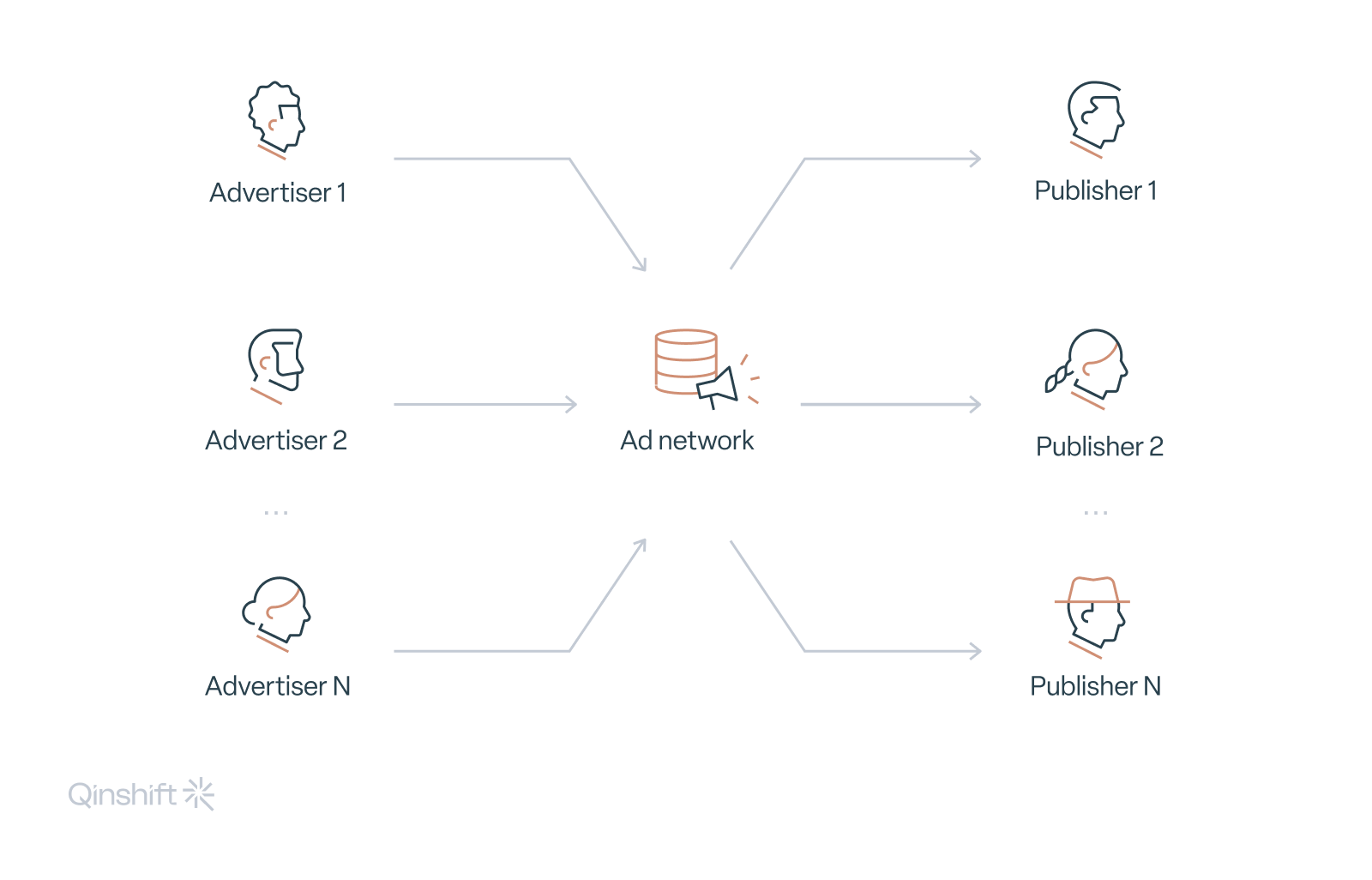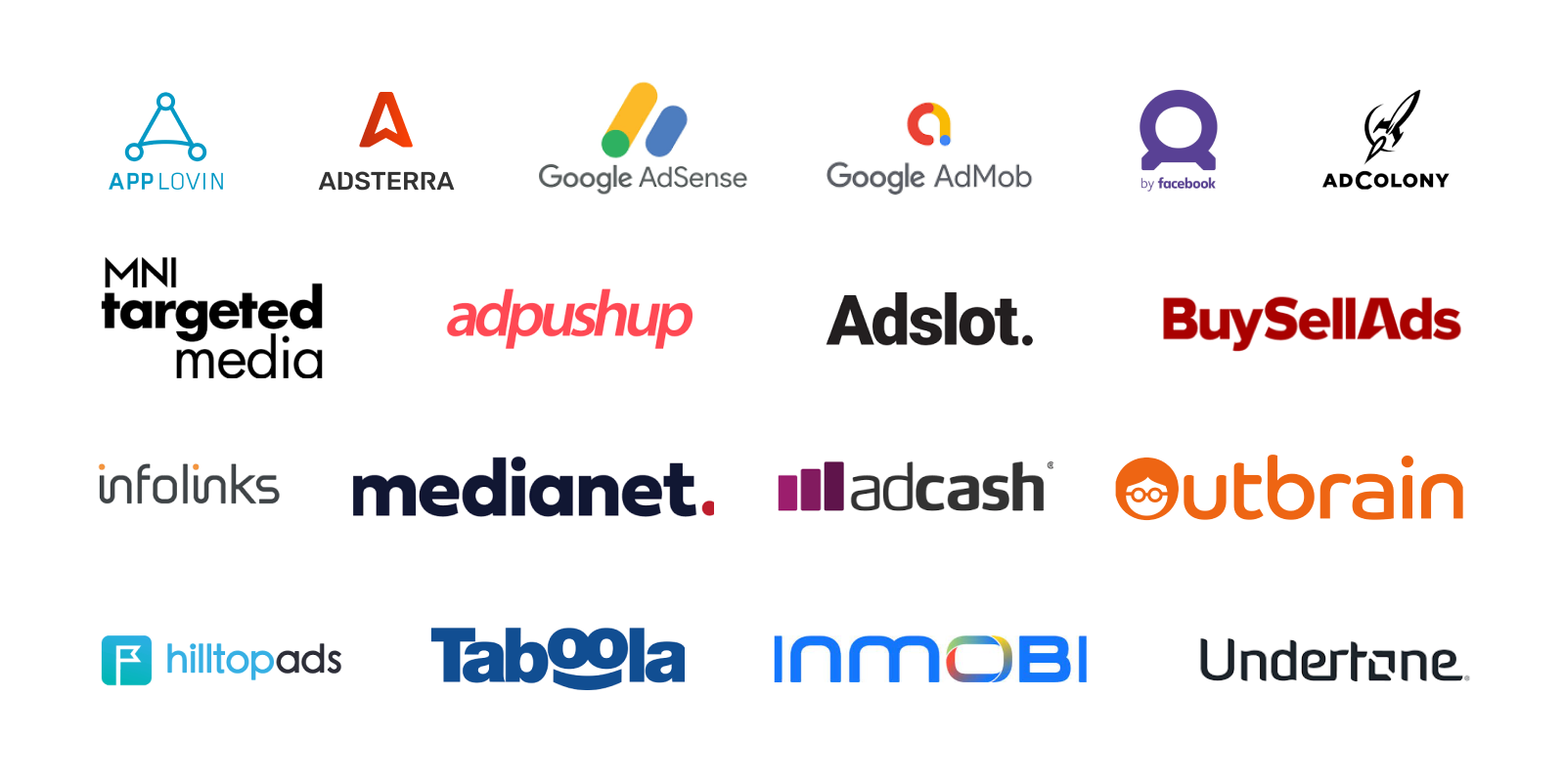What Is an Ad Network and How Does It Work?

When print publishers transitioned online, they sought to generate revenue similar to their print model, mostly through advertising. Display ads became the go-to method for monetising content.
Publishers could sell ad space directly to advertisers, but when it came to addressing unsold inventory, ad networks were introduced to help manage this remnant inventory.
Keep reading to dive deeper into the mechanics of ad networks and explore their complex inner workings.
What Is an Ad Network?
An ad network is a piece of advertising technology (AdTech) that serves as a middleman between groups of publishers and advertisers. It emerged in the mid-‘90s with online advertising and continues to serve the same purpose: helping advertisers buy ad space across various publishers.

While the term “ad network” might intuitively seem like it encompasses various media channels such as print, television, and radio, it is predominantly associated with online advertising.
Traditionally, these AdTech platforms gather unsold ad space from different publishers and offer it to advertisers at a lower price. This is often called non-premium or remnant inventory.
Currently, however, certain networks adopt a more strategic approach, moving towards providing advertisers with exclusive deals at premium rates. They select and pre-purchase inventory from top-tier publishers, subsequently reselling it at premium prices.
Although this arrangement may bring with it higher costs for advertisers, it guarantees prime placement of their advertisements.
What Is Waterfalling?
In the early days of online advertising, when there were fewer websites and advertisers, publishers mainly relied on one ad network to sell their leftover ad space.
As the number of websites grew, they found that one network couldn’t fill all their ad slots, leading to low fill rates. To solve this, publishers started using multiple ad networks. Some networks offered high-quality ad slots, while others dealt with the less desirable ones.
The process of sequentially calling ad networks one after another is commonly referred to as waterfalling.
4 Types of Ad Networks
The primary categories of ad networks are:
-
Premium ad networks
They provide ad space from well-known publishers.
-
Vertical ad networks
They’re used for specific topics such as business, technology, automotive, fashion, etc.
-
Specialised or inventory-specific ad networks (e.g. mobile, video, native)
They focus on particular types of ad inventory.
-
Performance and affiliate ad networks
They often operate on revenue sharing, cost-per-click (CPC), or cost-per-action (CPA) pricing models.
How Does an Ad Network Work?
Here’s how an ad network operates:
-
The ad network partners with multiple publishers to offer advertisers a wide range of ad slots.
-
Advertisers create campaigns using the ad network’s tools. They can also include code from another company to track their ads and gather campaign data.
-
Advertisers set up their campaigns, deciding who should see their ads, how much to spend, and how often their ads should appear. Publishers then place the ad network’s code on their websites, either directly or through another AdTech platform, e.g. an ad server.
-
After displaying an ad, advertisers can manage and make changes to the ad campaigns using the ad network’s tools, without needing to talk to the publisher directly.
Examples of Popular Ad Networks
Here are some well-known ad networks:

What’s the Difference Between Ad Networks and Other AdTech Platforms?
Ad Networks vs. Ad Servers
Ad networks and ad servers, introduced around the same time, are often confused due to the complexity of online advertising.
An ad server manages and tracks advertising campaigns for various players in the industry: publishers, advertisers, or agencies.
There are two types of ad servers: first-party (for publishers) and third-party (for advertisers).
First-party ad servers help publishers manage their ad space, sell ads directly or through networks, and track performance.
Third-party ad servers assist advertisers in storing ads, measuring campaign success across publishers, and verifying metrics like impressions and clicks.
In addition, an ad network facilitates transactions between advertisers and publishers, handling media buys.
Yet another difference between ad networks and ad servers is that publishers using first-party ad servers have more control over their ad inventory, allowing them to customise ad placements and optimise performance based on their audience.
Ad networks offer advertisers access to a broader range of publishers, but they often have less control over where their ads are displayed, as placements are determined by the network’s algorithms and available inventory.
Ad Networks vs. Ad Exchanges
While both ad networks and ad exchanges serve as intermediaries connecting advertisers with publishers, their operational mechanisms and functionalities differ significantly, making it essential to grasp the distinctions between the two.
In essence, the disparities between ad networks and ad exchanges lie in their transparency, pricing mechanisms, and access to ad inventory.
At its core, an ad network operates as a bridge between advertisers and publishers, with the transactions mainly being done in bulk.
In stark contrast, an ad exchange is a marketplace where the available ad inventory is bought and sold on an impression-by-impression basis.
One of the key features of ad exchanges is the implementation of real-time bidding (RTB) systems. This subcategory of programmatic media buying enables advertisers to bid on ad impressions in real-time auctions, optimising ad placements based on factors like audience demographics or browsing behaviour.
Ad Networks vs. Demand-Side Platforms (DSPs) and Supply-Side Platforms (SSPs)
The main difference between ad networks and demand-side platforms (DSPs) is the intended user base.
For an ad network, the user base are advertisers, publishers, and agencies; a DSP, on the other hand, is focused on the advertiser’s needs only. This difference also applies to supply-side platforms (SSPs), as they mainly accommodate publishers.
When comparing ad networks to DSPs, it’s important to note the distinction in how advertising space is purchased and sold.
Ad networks typically sell ad impressions from different publishers in large quantities, such as 10,000 impressions at once, while DSPs primarily utilise real-time bidding (RTB), where advertisers buy ad space on a per-impression basis across multiple publishers via ad exchanges or SSPs.
Conversely, SSPs were initially created to support publishers in selling their surplus ad inventory through multiple demand channels.
These were, however, just the initial goals of what these platforms were supposed to do, and they have since evolved into more advanced versions of themselves.
The Future of Ad Networks
Currently, we’re seeing a trend where ad networks are incorporating features of SSPs to provide a comprehensive solution for marketers.
For instance, ad networks are expanding beyond just premium inventory by integrating programmatic technology to optimise the supply they offer through real-time bidding. Additionally, they’re linking their remaining ad space with certain DSPs to improve ad fill rates for the publishers they work with.
Similarly, SSPs are adopting some functionalities of ad networks to appeal to high-quality publishers. They enable advertisers to purchase ad space directly, resembling ad networks by connecting those who have ad space with those who want to advertise.
As a result of these updates, the platforms become more alike in how they connect advertisers with available ad space, causing the distinction between them to become less clear.
Final Thoughts on Ad Networks
Thank you for reading our article on ad networks.
We hope it’s helped you gain a better understanding of this crucial aspect of digital advertising.
If there’s anything we can do for you, feel free to leave us a message and expect a reply soon!
Looking for AdTech & MarTech development services?
Discover how our teams can help you design, build and maintain advertising and marketing software.

